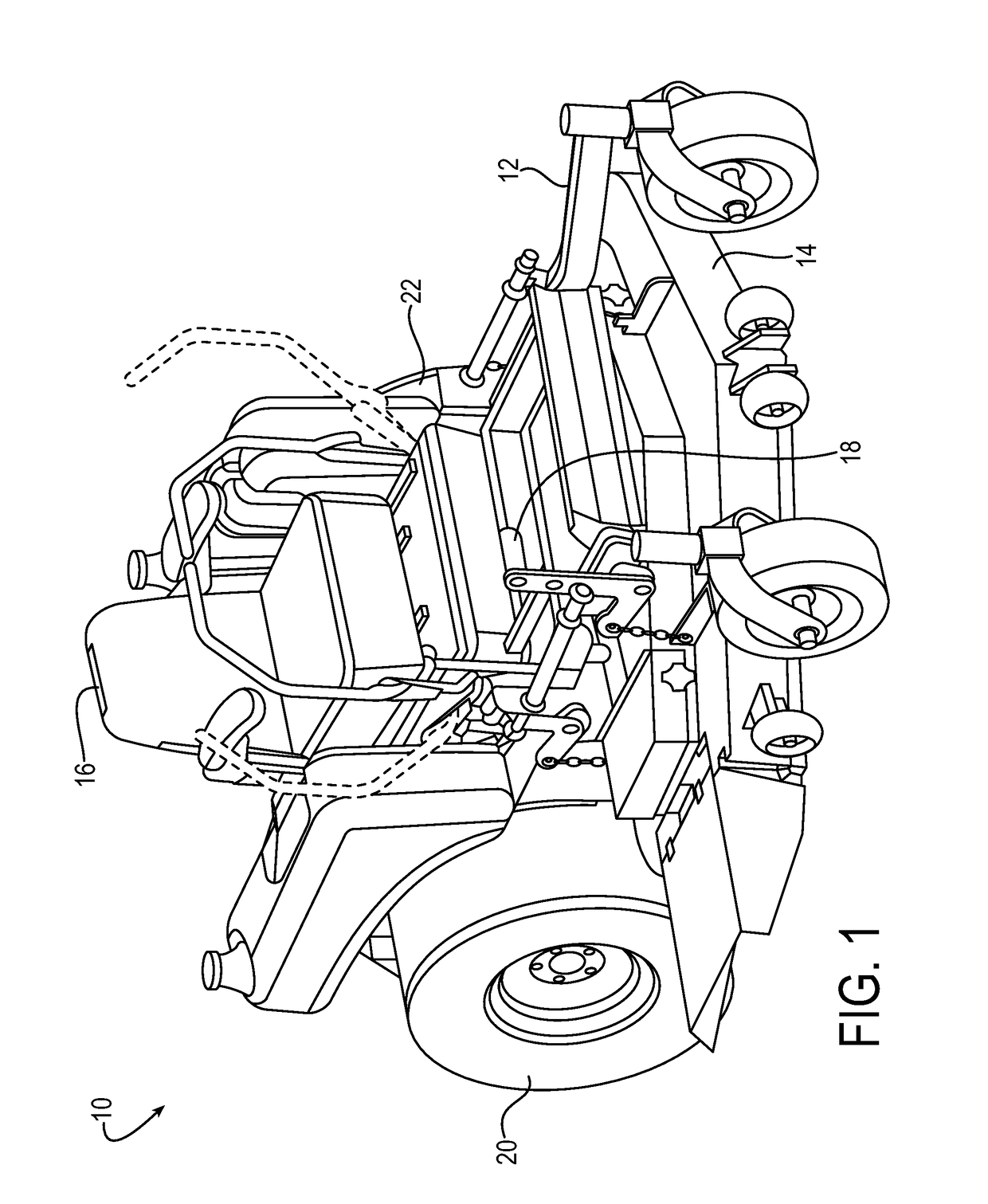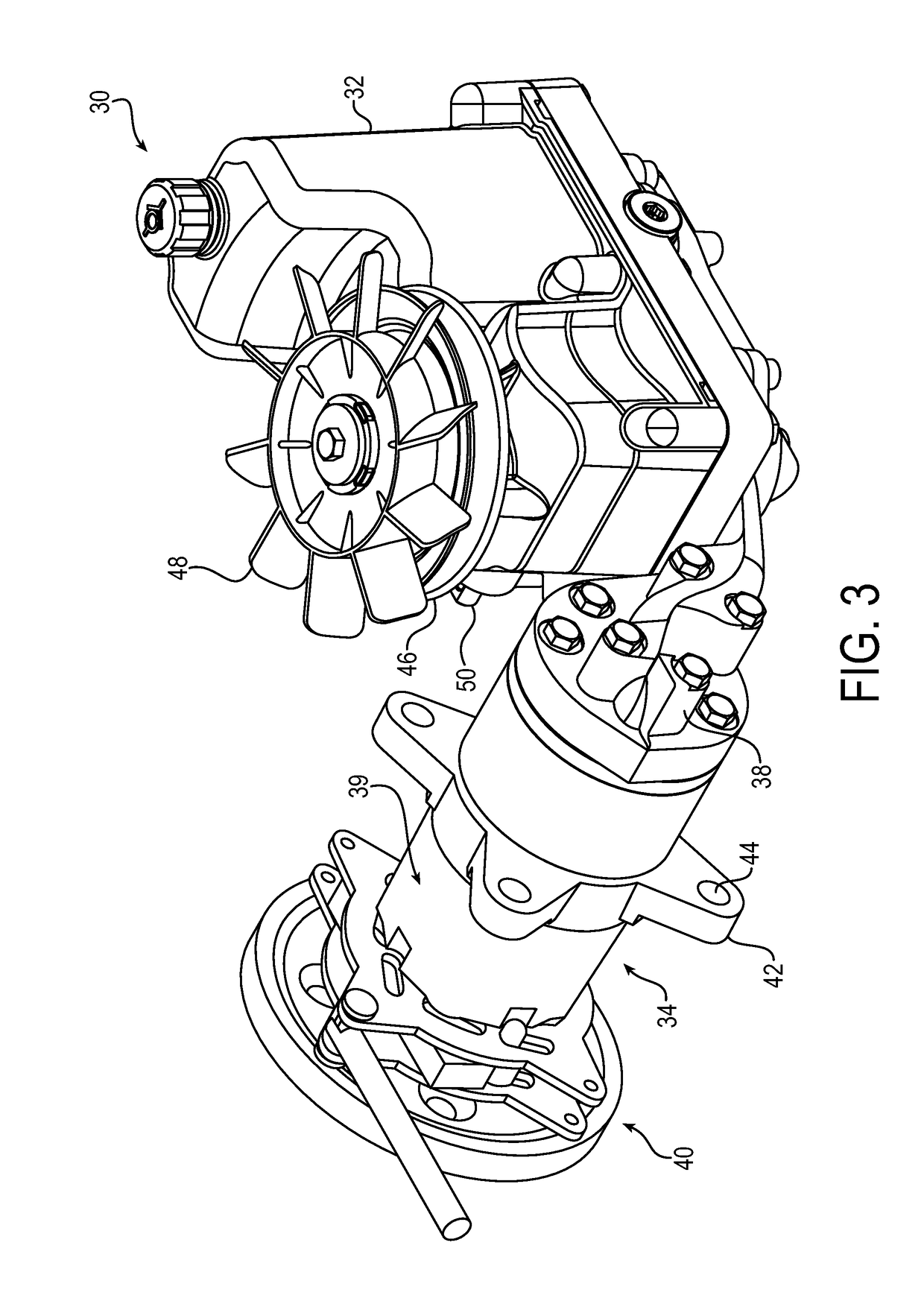Mowing machine brake apparatus with slideable engagement
a technology of brake apparatus and mowing machine, which is applied in the field of transmission, can solve the problems of large actuation force, mechanical interference of the locking mechanism with the hub, and user's need to exert relatively high force to disengage the brake, so as to reduce the force necessary and reduce the friction force
- Summary
- Abstract
- Description
- Claims
- Application Information
AI Technical Summary
Benefits of technology
Problems solved by technology
Method used
Image
Examples
Embodiment Construction
[0068]The principles of the present application have particular application to mowers, such as zero-turn-radius mowers, and thus will be described below chiefly in this context. It will of course be appreciated and also understood that the principles of the invention may be useful in other vehicles, such as vehicles utilizing mechanical, hydrostatic, hydraulic, or electric drive systems, or with any equipment requiring restriction of rotation of a component, such as upon demand.
[0069]Referring now to the drawings in detail, and initially to FIG. 1, an exemplary zero-turn-radius mower 10 is illustrated. The mower 10 includes a frame 12, a mower deck 14 supported by the frame 12 for mowing grass, an operator seat 16, and a plurality of controls 18 for operating the mower 10. A rear mounted engine (not shown) mounted to the frame 12 behind the seat 16 provides power to a hydraulic axle combination mounted to the frame 12, the hydraulic axle combination including hydrostatic transmissio...
PUM
 Login to View More
Login to View More Abstract
Description
Claims
Application Information
 Login to View More
Login to View More - R&D
- Intellectual Property
- Life Sciences
- Materials
- Tech Scout
- Unparalleled Data Quality
- Higher Quality Content
- 60% Fewer Hallucinations
Browse by: Latest US Patents, China's latest patents, Technical Efficacy Thesaurus, Application Domain, Technology Topic, Popular Technical Reports.
© 2025 PatSnap. All rights reserved.Legal|Privacy policy|Modern Slavery Act Transparency Statement|Sitemap|About US| Contact US: help@patsnap.com



